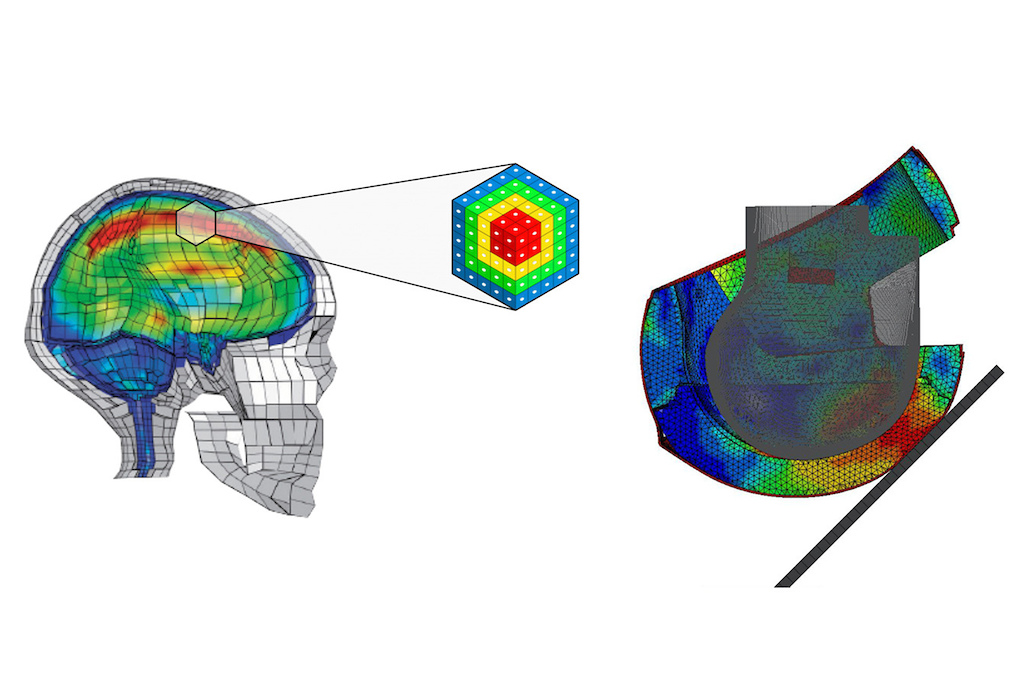MIPS Announces Finite Element Analysis Tool for Improved Helmet Testing
MIPS has announced a new Finite Element Analysis tool that it claims to be the future of helmet development.
Finite Element Analysis is a computer simulation that is often used to analyze the strength of complex structures in real-world conditions. Finite Element Analysis can help a designer investigate potential changes in cost, weight or manufacturing to allow brands to be more confident in a design before undertaking any expensive or destructive test methods.
For helmet testing, MIPS has created a computer model of the human head and brain that will feature upwards of 50,000 elements that can have acceleration pulses applied tocthem to document the strain in each one. MIPS will use this to predict the helmet's response to both standards testing and real-world impacts.
The new tool from MIPS should allow brands to cut down on the cost and duration of testing as they can virtually trial designs using CAD files rather than physically creating prototype helmets. Finite Element Analysis should also help cut back on product waste as there will be fewer design iterations, re-tooling and consumed materials.
FEA's use for helmets isn't necessarily new for MIPS, with the foundations of the brand's' slip-plane technology forming after Hans von Holst, met with Peter Halldin and Svein Kleiven at the Royal Institute of Technology in Stockholm, Sweden, who had access to one of six Finite Element Analysis models of the human brain at the time.
MIPS will be offering brands its virtual testing service where helmets can be compared and tested in accordance with a wide range of standards. The first testing standard to utilize the FEA testing method will be ECE 22.06, which includes testing for rotational motion.
You can find out more here
Author Info:
Must Read This Week
[UPDATED] Final Elite XC Results & Overall Standings from the Mairiporã XC World Cup 2024
42004 views
42004 views
Sign Up for the Pinkbike Newsletter - All the Biggest, Most Interesting Stories in your Inbox
PB Newsletter Signup



As a design engineer I use FEA pretty quickly/easily on anything that might have a load on it - so guarantee anybody making helmets already does some type of simulation. Only now it sounds like MIPS is creating a standard simulation set-up - analogous to standard tests for say DOT or ASTM certifications. That little yellow emblem is becoming more like the organic sticker at grocery stores - it just means it meets a standard set of requirements tested/verified in a consistent matter.
So again, probably good, but it is a marketing strategy / product.
They don't even include what software they use so it's unclear if their FEA is junk (Solidworks FEA) or a powerful non-linear solver (Abaqus).
I'd be shocked if any helmet design companies weren't already doing FEA in house or sending it to a contract engineering firm already.
In a lab. You can test a specific impact on a specific part, and I agree. Initial design, fine. But that fact that crashes vary so much means that you are only actually testing such a small range of the possible types of crashes available to a budding MTB rider. If you got all 5000 giro whatevers back that were crashed in. And then you categorised them, direction of impact etc... Plotted it against damage..... Or whatever you wanted to investigate. Its a aspect that isn't being looked at and I think should be
If they put sensors on the athletes brain they could really test their models lol
But thankyou to all the selfless people and their families who donate there bodies in the name of science.
Which makes our helmets safer ( and cars)